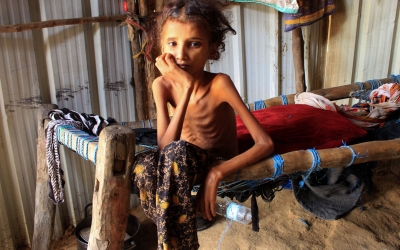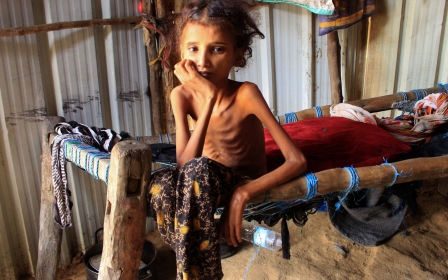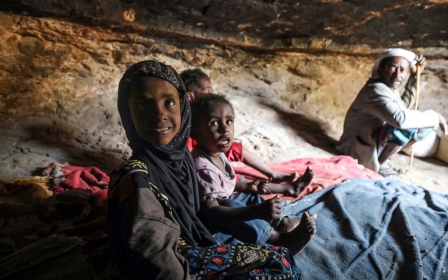Yemen: UN expects over two million children to go hungry or starve in 2021

About 400,000 children under the age of five are in danger of dying of acute malnutrition in war-torn and impoverished Yemen, UN agencies warned on Friday.
The agencies said half of those in the most vulnerable age bracket - or 2.3 million small children - are projected to suffer from severe malnutrition this year.
"These numbers are yet another cry for help from Yemen, where each malnourished child also means a family struggling to survive," World Food Programme (WFP) chief David Beasley said in a joint statement.
The number of Yemeni children in danger of death from lack of food has risen to 400,000, an increase of 22 percent over 2020.
"More children will die with every day that passes without action," said Henrietta Fore, head of the United Nations children’s agency Unicef.
"Humanitarian organisations need urgent predictable resources and unhindered access to communities on the ground to be able to save lives."
'I [have] really lost hope'
Commenting on the figures in a statement also released on Friday, Xavier Joubert, Save the Children’s Country Director for Yemen, said:
“These numbers are horrific. It’s deeply worrying that millions of children are already in a daily battle for survival and that it’s only getting even worse. The figures are a clear warning that 2021 is going to be a long and possibly deadly year for children in Yemen unless urgent action is taken.”
In its statement, Save the Children highlighted the case of four-month-old Noor, not her real name, who has been diagnosed with severe acute malnutrition and diarrhoea.
Her mother Safiya (also not her real name) spoke from one of the hospitals supported by Save the Children in Taiz.
“I took Noor to the hospital. The doctor prescribed milk for her. I used to buy the milk bottle for her for 3000 YER ($12). Now I buy it for 4000 YER ($16)," said Safiya.
"We are suffering because we cannot afford to buy her milk and other [goods]. We do not want to live [like this] anymore. I’m so depressed. All children are sick. I [have] really lost hope. We do not have the required food. If we have lunch, we do not have dinner. Sometimes my children sleep without dinner or water.”
Shortage of funding
The UN agencies warned that about 1.2 million pregnant or breastfeeding women are also expected to suffer from extreme malnutrition in 2021.
"The crisis in Yemen is a toxic mix of conflict, economic collapse and a severe shortage of funding to provide the life-saving help that's desperately needed," said Beasley.
"But there is a solution to hunger, and that's food and an end to the violence."
Yemen is engulfed in a bloody power struggle that erupted in 2014 between its government, supported by a Saudi Arabia-led coalition, and Houthi rebels, who control the capital Sanaa and most of the north.
Today, millions of Yemenis are on the brink of famine, with the economy destroyed, schools and hospitals barely functioning and tens of thousands killed.
According to the UN, more than three million people have been displaced and close to 80 percent of the population of 29 million is in need of some form of aid for survival.
The UN says that in 2020 it received only $1.43bn of the $3.2bn needed to fund aid projects in Yemen.
Last week, US President Joe Biden announced that he was “ending all American support for offensive operations in the war in Yemen” waged by the Saudi-led coalition.
Middle East Eye propose une couverture et une analyse indépendantes et incomparables du Moyen-Orient, de l’Afrique du Nord et d’autres régions du monde. Pour en savoir plus sur la reprise de ce contenu et les frais qui s’appliquent, veuillez remplir ce formulaire [en anglais]. Pour en savoir plus sur MEE, cliquez ici [en anglais].






